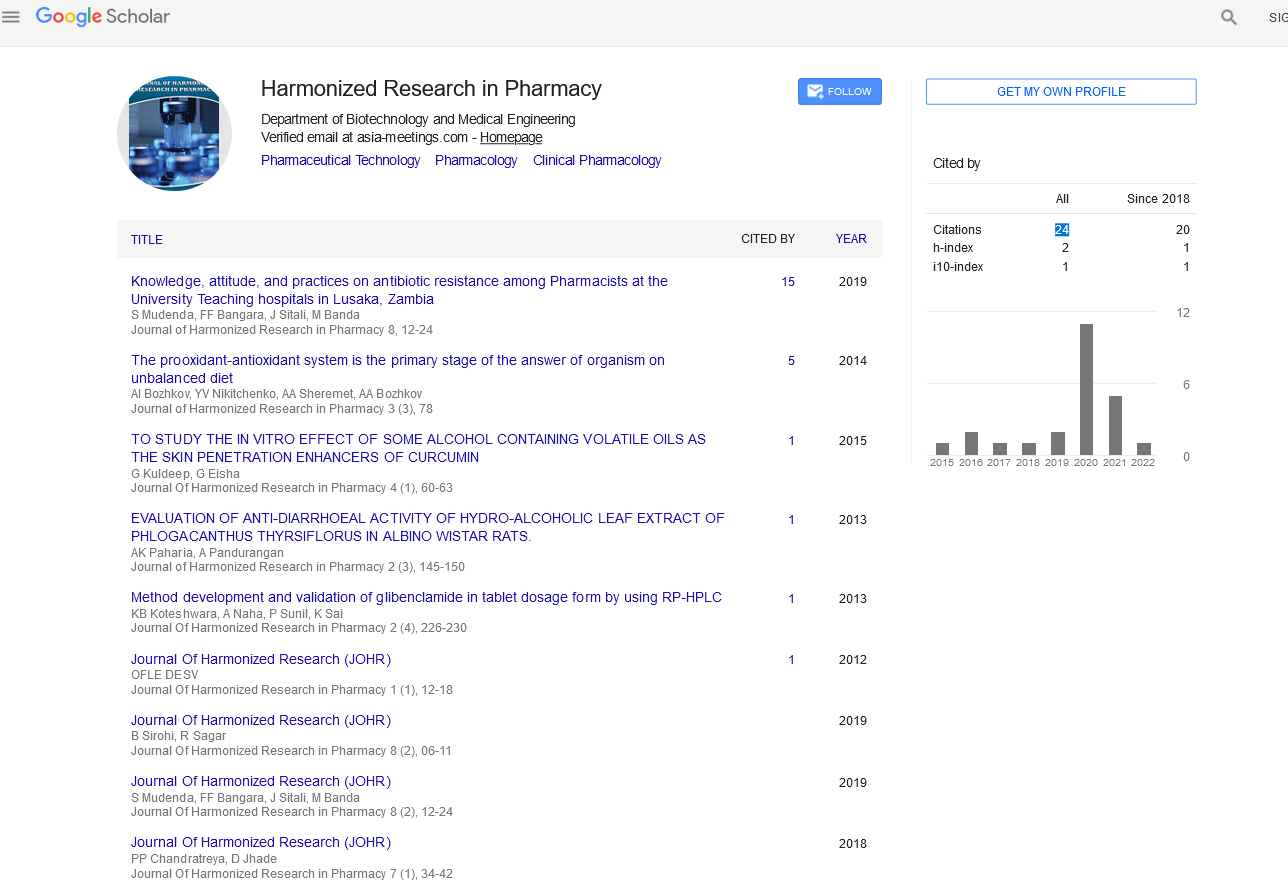ANTIDIABETIC AND ANTIOXIDANT ACTIVITY OF AQUEOUS ROOT EXTRACT OF CHLOROPHYTUM BORIVILIUANUM (SAFED MUSLI)
Abstract
Author(s): Hemlata Rathore, Bhushan Hatwar & Shishupal Bodhankar
To investigate the antidiabetic effect of aqueous extract of Chlorophytum borivilianum (safed musli) root. Methods: The collected roots were washed; shade dried and was pulverized with a me chanical pulverizer for the size reduction. It was then passed through mesh of size # 60 and the fine powder was collected and was used for the experiment for powder microscopy and preparation of extract. The root powder (1000 g) was subjected to cold maceration in 2 L of sterile distilled water for 48 hours at room temperature, filtered into a clean round bottom flask. The a- Glucosidase inhibitory activity was conducted where 100µl of a sample of different concentrations was incubated with 50µl a-glucosidase (1.0 U/ml) (from Saccharomyces cerevisiae) in phosphate buffer (0.1 M, pH 6.8) for 10 min at 37°C. The reaction was initiated by addition of 50 µl of substrate: 5 mM, p-nitrophenyl-a-D glucopyranoside in a 0.1 M phosphate buffer at pH 6.8. P-nitrophenol’s release kinetics. The a -Amylase Inhibition where 250µL of the extract (5mg/mL) was preincubated with 250µL of -amylase solution for 10min at 25°C in one set of tubes. In another set of tubes -amylase was preincubated with 250µL of phosphate buffer (pH 6.9). 250µL of starch solution at increasing concentrations (0.30–5.0mg/mL) was added to both sets of reaction mixtures to start the reaction. The mixture was then incubated for 10min at 25°C and then boiled for 5min after the addition of 500µL of DNS to stop the reaction. Results: In this study acarbose was also used as a standard drug for a-glucosidase inhibitor. Acarbose at a concentration of (100-1000 µg/ml) showed a-glucosidase inhibitory activity from 30. 31±0.1084to 84.05±0.2075% with an IC value 411.436567µg dry extract, & acarbose was also used as a standard drug for a amylase inhibitor. Acarbose at a concentration of (100-1000 µg/ml) showed a-glucosidase inhibitory activity from 23.33±0.1415 to 62.05±0.2725% with an IC value 236.774194µg dry extract. Conclusions: As a result, we found that the extract of C. boriviliamum have free radical scavenging activity and inhibitory activity against a-amylase and a-glucosidase and this therapeutic potentiality could be exploited in the management of post prandial hyperglycemia in the treatment of type 2 diabetes mellitus.

Google Scholar citation report
Citations : 147
Journal of Harmonized Research in Pharmacy received 147 citations as per google scholar report









